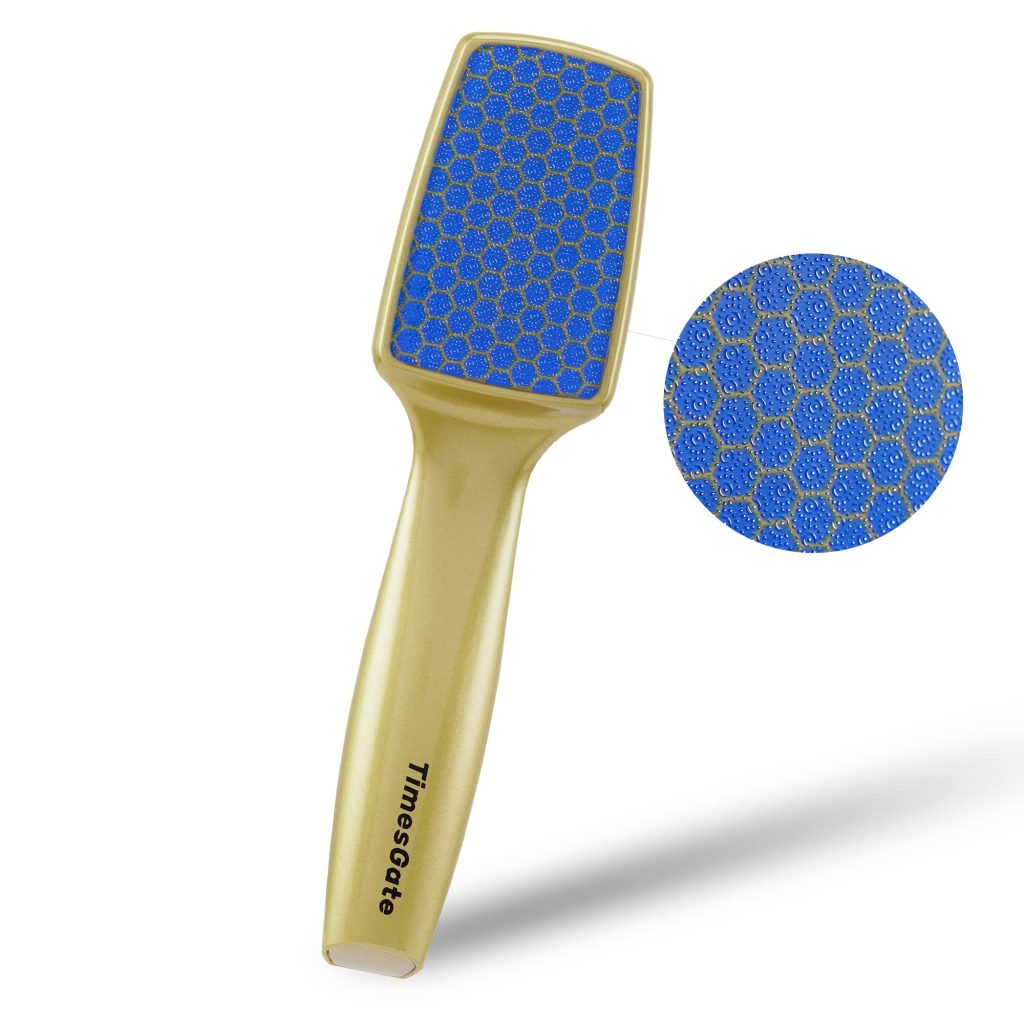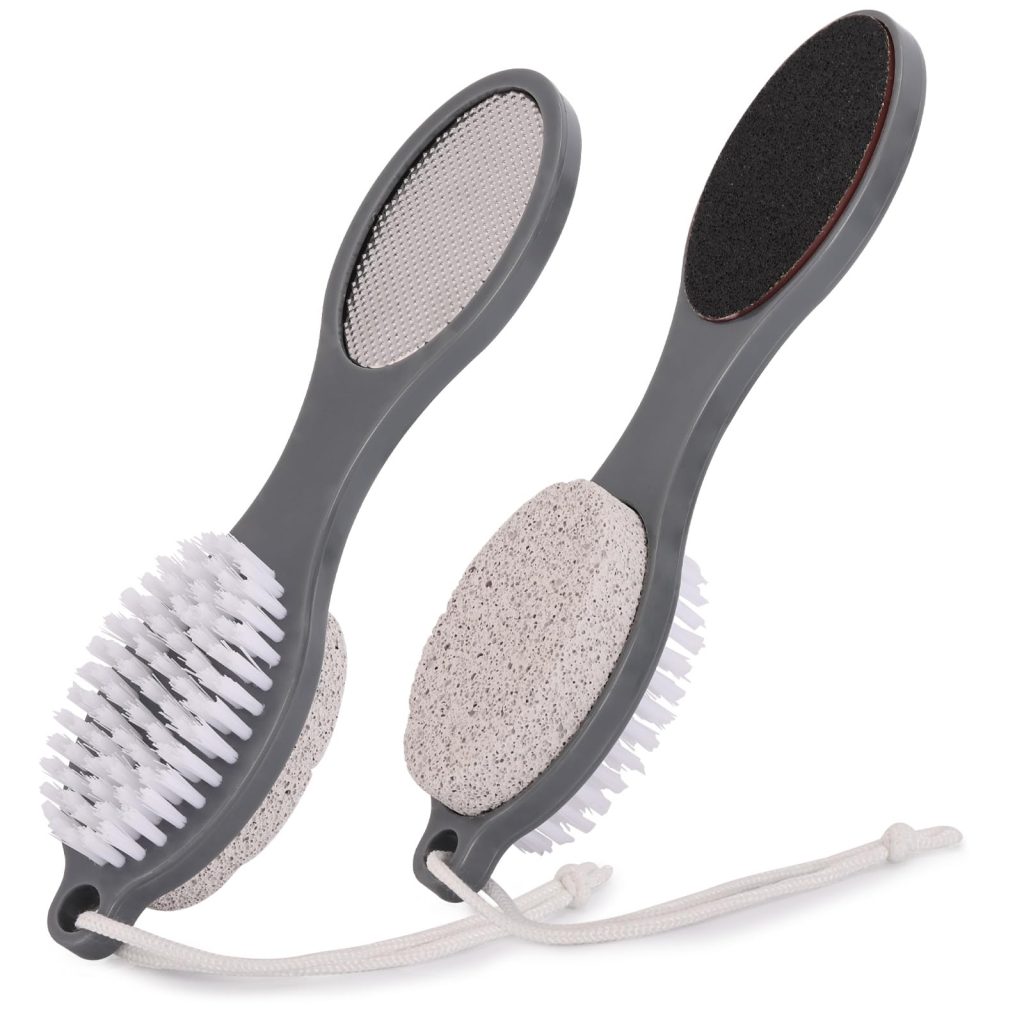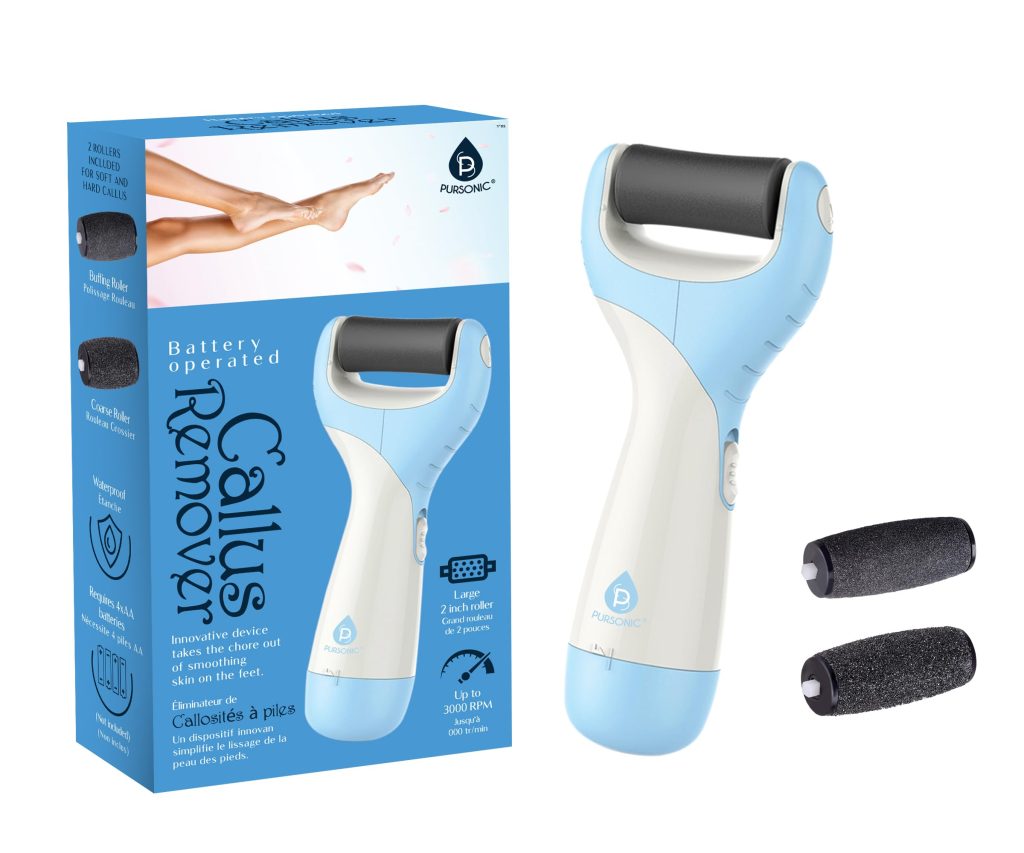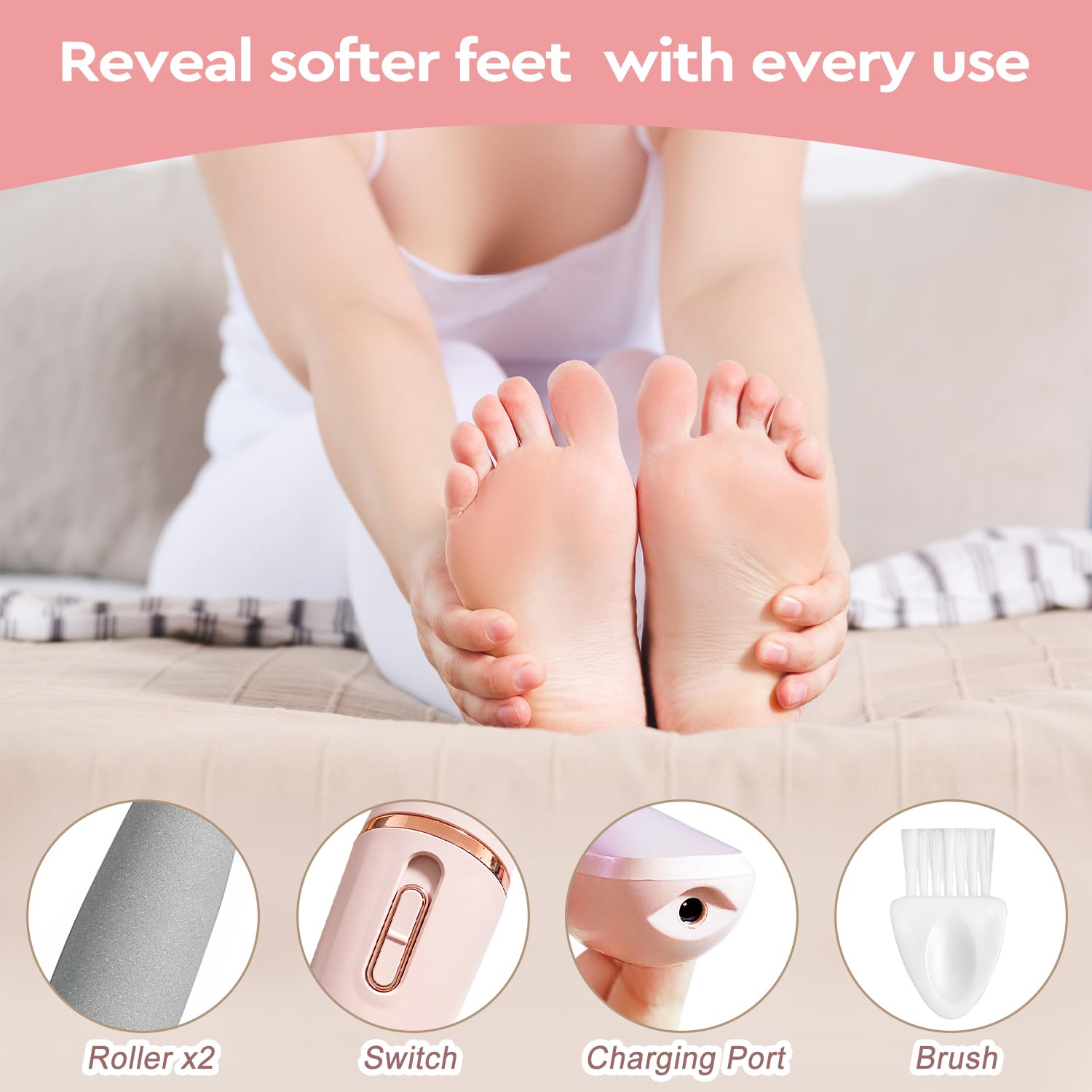Tools for Smoother Feet: Top 5 Callus Removers for Stubborn Skin (Guide 2025)
Discover specialized callus removers for stubborn, thickened skin. Explore manual and electric tools for smoother feet, plus tips for safe, effective use. Achieve smoother, healthier feet!
Have you ever struggled with stubborn calluses that just won’t budge? As someone who’s battled rough, thickened skin for years, I know firsthand how frustrating it can be. That’s why I’m excited to jump into the industry of tools for smoother feet, Tools designed to tackle even the toughest patches of skin.
In this text, I’ll explore the most effective callus removers for stubborn, thickened skin. We’ll look at various types of tools, from traditional pumice stones to modern electronic devices, and discuss their pros and cons. I’ll also share some tips on how to use these tools safely and effectively to achieve smoother, healthier feet. Whether you’re a seasoned pedicure pro or new to foot care, you’ll find valuable insights to help you choose the right callus remover for your needs.
Understanding Calluses and Their Impact on Skin
What are Calluses?
Calluses are thickened areas of skin that develop in response to chronic friction or pressure. They’re the body’s natural defense mechanism, acting as a protective barrier against daily wear and tear. Dr. Joshua Zeichner, director of cosmetic and clinical research in dermatology at The Mount Sinai Hospital, describes calluses as “nature’s bodyguard for your feet.”
Causes and Impact
Calluses typically form on weight-bearing areas of the feet, such as the heels, toes, and balls. While they serve a protective function, excessively thickened calluses can lead to discomfort and potential health issues:
- Discomfort: Thick calluses can cause pain when walking or standing.
- Cracking: Severe calluses may crack, increasing the risk of infection.
- Altered gait: Painful calluses can change how you walk, potentially causing other foot or leg problems.
- Reduced sensitivity: Thick calluses can decrease foot sensitivity, making it harder to detect injuries.
Types of Callus Removers
Manual Tools
Manual callus removers physically buff away rough skin layers. Common types include:
- Foot files: Flat, abrasive surfaces for filing down calluses
- Pumice stones: Natural volcanic rocks with a porous texture
- Rasps: Metal files with sharp edges for stubborn calluses
These tools are effective for regular maintenance but may require more effort for stubborn thickened skin. When dealing with particularly tough calluses, specialized tools designed for stubborn thickened skin offer more targeted and efficient removal.
Types of Callus Removers for Stubborn Thickened Skin
Callus removers for stubborn thickened skin come in various forms, each designed to tackle tough, built-up skin effectively. These specialized tools and products cater to different preferences and levels of callus severity.
Physical Callus Removal Tools
Physical callus removers use mechanical action to remove thickened skin. Manual tools like foot files, pumice stones, and callus shavers offer traditional methods for buffing away dead skin cells. The PedEgg Classic Callus Remover, for example, features a blade design that shaves off callused skin while collecting shavings for easy cleanup.
Electric callus removers provide a more efficient option for stubborn calluses. Devices such as the Dr. Scholl’s Callus Remover Electronic Foot File and the Amopé Pedi Perfect Electric Callus Remover use rotating rollers to quickly buff away dead skin. These tools often come with interchangeable roller heads of varying coarseness, allowing users to customize their treatment based on callus severity.
Chemical Callus Removal Products
Chemical callus removers use active ingredients to soften and dissolve thickened skin. These products often contain salicylic acid, urea, or alpha-hydroxy acids (AHAs) that work to break down the protein bonds in dead skin cells. Callus removal creams, gels, and patches are applied directly to the affected area and left on for a specified time to penetrate and soften the callus.
Some chemical removers come in the form of foot soaks or peels, which can treat larger areas of thickened skin at once. These products typically require multiple applications over several days to achieve optimal results. While chemical removers can be effective, it’s important to follow instructions carefully to avoid skin irritation or damage.

Top Features to Look for in Callus Removers
When choosing a callus remover for stubborn, thickened skin, it’s crucial to consider exact features that ensure optimal results. Here are the top features to look for in callus removers:
Safety and Effectiveness
Safety and effectiveness are paramount when selecting a callus remover. Manual tools like foot files and pumice stones offer a controlled approach, allowing precise targeting of thickened areas. Electric devices, such as Dr. Scholl’s Electronic Foot File, provide quick and efficient removal with rotating rollers. Chemical removers containing salicylic acid or fruit acids can effectively break down calluses but require caution. Always opt for products with safety features like ergonomic designs or adjustable settings to prevent over-exfoliation. For maximum effectiveness, choose a callus remover that matches your skin type and the severity of your calluses.
Ease of Use
The best callus removers are designed for effortless operation. Electric callus removers, like the Amopé Pedi Perfect, offer convenience with their battery-powered operation and ergonomic handles. Manual tools should have comfortable grips and lightweight designs for easy maneuvering. Chemical removers in gel or cream form are often easy to apply but may require more time to show results. Consider your personal preferences and physical abilities when selecting a callus remover. Look for features like waterproof designs for use in the shower or long-lasting batteries for cordless operation to enhance usability.
Durability and Maintenance
A durable callus remover ensures long-term value and consistent performance. For manual tools, opt for high-quality materials like stainless steel or durable plastics that resist wear and tear. Electric devices should have replaceable rollers or heads to extend their lifespan. Chemical removers typically don’t require maintenance, but their shelf life should be considered.
Look for callus removers that are easy to clean and sanitize to maintain hygiene. Some electric models come with cleaning brushes or are washable under running water. Choose a product with a warranty or good customer support to ensure long-term satisfaction and reliability.
How to Choose Tools for Smoother Feet
When selecting a callus remover for stubborn, thickened skin, I consider several key factors to ensure optimal results:
Skin Sensitivity and Callus Severity
I match the tool’s abrasiveness to my skin type and callus thickness:
- Mild calluses: Gentle pumice stones or fine-grained foot files
- Moderate calluses: Medium-grit foot files or electronic foot files with multiple speed settings
- Stubborn calluses: Coarse-grained foot files, callus shavers, or powerful electric removers
Manual vs. Electric Tools
I weigh the pros and cons of each type:
Manual Tools:
- Inexpensive and portable
- Require more effort and time
- Offer precise control
Electric Tools:
- More efficient for large areas
- Require less physical effort
- Often come with multiple attachments for versatility
Safety Features
I prioritize tools with:
- Ergonomic designs to prevent slipping
- Adjustable settings for controlled removal
- Hygienic materials that are easy to clean and sanitize
Versatility and Convenience
I look for removers that:
- Work on both dry and wet skin
- Include multiple attachments or roller heads
- Are rechargeable or battery-operated for cordless use
Durability and Maintenance
I choose tools that:
- Are made from high-quality, long-lasting materials
- Have replaceable parts for extended use
- Come with warranties or guarantees
By considering these factors, I ensure I select a callus remover that effectively addresses my exact needs while prioritizing safety and ease of use.

Proper Techniques for Using Callus Removal Tools
When it comes to using callus removers, proper technique is crucial for safe and effective results. I’ll guide you through the best practices for both electric and manual callus removal tools.
Electric Callus Removers
Electric callus removers are efficient tools for tackling stubborn thickened skin. Here’s how to use them effectively:
- Use on dry feet for optimal results
- Apply gentle to moderate pressure
- Move the device in circular motions over callused areas
- Limit sessions to 2-3 minutes per foot to avoid irritation
- Clean the device after each use to maintain hygiene
- Replace roller heads or pumice stones as recommended by the manufacturer
Manual Callus Removers
Manual tools like foot files and pumice stones are great for regular maintenance. Follow these steps for best results:
- Soak feet in warm water for 5-10 minutes to soften the skin
- Gently rub the tool over callused areas using circular or back-and-forth motions
- Apply light pressure to avoid damaging healthy skin
- Rinse feet and apply moisturizer after treatment
- Clean and dry the tool thoroughly after each use
Remember, consistency is key when using callus removers. Regular maintenance prevents calluses from becoming excessively thick and harder to remove. Always follow the manufacturer’s instructions and stop use if you experience any pain or irritation.
Combining Methods for Optimal Results
I’ve found that combining different callus removal methods often yields the best results for stubborn, thickened skin. By integrating manual and electric tools with chemical treatments, you can effectively tackle even the toughest calluses.
Manual tools like the PedEgg Classic Callus Remover, with its 135 precision micro-blades, are excellent for initial buffing. These tools safely remove the outer layer of dead skin, preparing the callus for further treatment. Following up with an electric device, such as the Dr. Scholl’s Callus Remover Electronic Foot File, can then smooth out any remaining rough patches.
For particularly stubborn areas, I recommend using a foot rasp or scraper like the Easkep Professional Grater Rasp Foot Scraper. These tools work well on both dry and wet feet, allowing you to target exact problem spots with precision.
To enhance the effectiveness of physical removal methods, consider incorporating chemical treatments. Foot soaks containing salicylic acid or urea can soften the callused skin, making it easier to remove with manual or electric tools. After treatment, apply a moisturizing cream to keep the skin hydrated and prevent future callus formation.
By combining these methods, you create a comprehensive approach to callus removal:
- Soften: Use a chemical foot soak
- Buff: Apply a manual tool like the PedEgg
- Smooth: Follow up with an electric device
- Hydrate: Finish with a moisturizing treatment
This multi-step process ensures thorough callus removal while maintaining skin health. Remember to be consistent with your foot care routine to prevent calluses from becoming excessively thick in the future.

Preventing Callus Formation and Skin Maintenance
Preventing callus formation is key to maintaining healthy, smooth feet. I’ve found that a proactive approach to foot care can significantly reduce the need for frequent callus removal. Here are some effective strategies I use:
- Moisturize daily:
- Apply foot cream or lotion after bathing
- Focus on areas prone to callus formation
- Use products containing urea or salicylic acid
2. Wear properly fitting shoes:
- Choose shoes with adequate toe room
- Avoid high heels or shoes that create pressure points
- Replace worn-out shoes regularly
3. Use orthotics or insoles:
- Distribute pressure evenly across the foot
- Reduce friction in problem areas
- Custom orthotics for exact foot conditions
4 . Exfoliate regularly:
- Gentle scrubbing with a pumice stone or foot file
- Use during or after bathing when skin is softest
- Limit sessions to 2-3 minutes per foot
5. Protect high-pressure areas:
- Apply moleskin pads to friction-prone spots
- Use silicon toe separators for bunions
- Wear cushioned socks during high-impact activities
6. Stay hydrated:
- Drink adequate water daily
- Helps maintain skin elasticity
- Supports overall foot health
7. Regular foot soaks:
- Use Epsom salt or apple cider vinegar
- Soak for 15-20 minutes weekly
- Softens skin and reduces callus buildup
By incorporating these preventive measures into my foot care routine, I’ve significantly reduced callus formation and maintained healthier, smoother skin on my feet. Consistency is crucial for long-term results, so I make sure to stick to this regimen regularly.

When to Seek Professional Help
While callus removers can effectively manage many cases of thickened skin, certain situations require professional intervention. I recommend consulting a podiatrist or dermatologist if:
- Persistent pain or discomfort: Calluses causing ongoing pain, even after using over-the-counter treatments, may indicate underlying issues.
- Diabetes or circulation problems: People with these conditions face higher risks of foot complications and should avoid self-treatment.
- Severe or deep cracks: Deep fissures in calluses can lead to infections and require medical attention.
- Bleeding or signs of infection: Redness, swelling, warmth, or oozing around the callus area necessitates immediate professional care.
- Recurring calluses: Frequent reappearance of calluses in the same spot might signal biomechanical issues needing expert assessment.
- Abnormal skin changes: Unusual color changes, growths, or texture alterations in the callused area warrant professional evaluation.
- Limited mobility: If calluses impair walking or daily activities, seek professional help for comprehensive treatment.
- Ineffective home treatments: When over-the-counter products and proper foot care fail to improve the condition, a professional can offer advanced answers.
- Uncertainty about self-care: If you’re unsure about safely removing calluses or have concerns about your foot health, consult a professional for guidance.
- Calluses on sensitive areas: Calluses on weight-bearing areas or near joints may require specialized treatment to prevent complications.
Professional podiatrists and dermatologists possess the expertise and tools to safely address stubborn calluses while identifying and treating any underlying causes. They can provide customized treatment plans, including prescription-strength medications, custom orthotics, or minor procedures when necessary.
Conclusion
Specialized callus removers are essential tools for tackling stubborn thickened skin on our feet. By understanding the different types available and following proper techniques we can effectively manage and prevent calluses. Remember to choose a tool that suits your needs and always prioritize safety. With consistent care and the right approach we’ll be well on our way to smoother healthier feet. Don’t hesitate to seek professional help if needed – your foot health is worth it!

